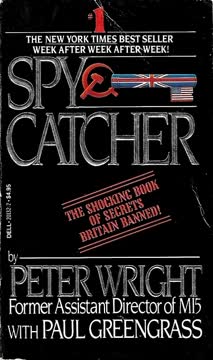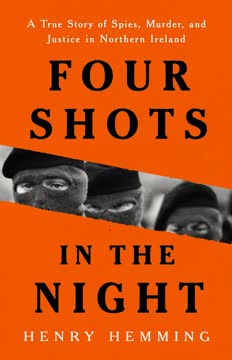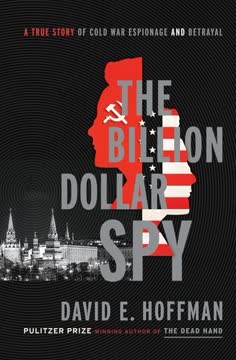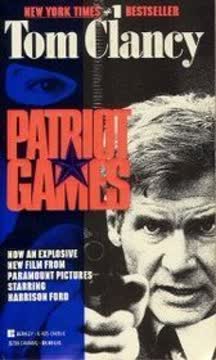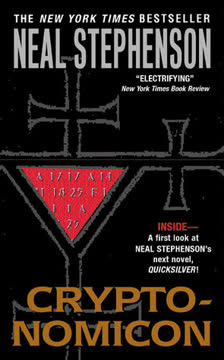Key Takeaways
1. Early Life and Family Influences Shaped Wright's Path into Espionage
It all began in 1949, on the kind of spring day that reminds you of winter.
Family Legacy. Peter Wright's journey into the world of espionage was deeply influenced by his father's involvement in intelligence during World War I. His father, a Marconi engineer, pioneered radio interception techniques, setting a precedent for secret service within the family. This early exposure instilled in Wright a fascination with the technical aspects of intelligence work.
Technical Aptitude. Wright's natural aptitude for science and technology, nurtured by his father, proved invaluable. His early experiments with radio technology and radar systems laid the groundwork for his future role as MI5's first scientific officer. This background allowed him to approach intelligence problems with a unique perspective, focusing on innovation and improvisation.
Adversity and Determination. Overcoming personal hardships, including health issues and family financial struggles, instilled in Wright a resilience and determination that would serve him well in the challenging world of espionage. These experiences shaped his character and fueled his drive to succeed, even in the face of adversity.
2. Technical Expertise Became a Potent Weapon in the Cold War
This war is going to be fought with spies, not soldiers, at least in the short term.
Eavesdropping Innovation. Wright's technical expertise revolutionized MI5's eavesdropping capabilities. He developed innovative microphones and resonance devices, enabling covert surveillance without physical entry. These advancements provided a crucial edge in gathering intelligence during the Cold War.
"The Thing" and Satyr. His work on "the Thing," a Soviet eavesdropping device, and the development of Satyr, a microwave listening system, showcased his ingenuity and established his reputation as a problem-solving scientist. These successes demonstrated the power of technical intelligence and paved the way for further advancements.
Collaboration and Adaptation. Wright's ability to collaborate with scientists from various fields, including the Post Office and the Admiralty, allowed him to adapt existing technologies for intelligence purposes. This collaborative approach fostered innovation and ensured that MI5 remained at the forefront of technical intelligence.
3. MI5's Internal Culture and Bureaucracy Hampered Progress
As you know, we don't really exist.
Bureaucratic Obstacles. Despite his technical expertise, Wright faced significant bureaucratic obstacles within MI5. The organization's rigid hierarchy, financial constraints, and resistance to modernization hampered his efforts to implement new technologies and strategies. This internal resistance often stifled innovation and limited the effectiveness of British intelligence.
Finance and Resources. The Intelligence Services were forced to spend most of the postwar period begging from the increasingly reluctant Armed Services. In Wright's view, it was this more than any other factor which contributed to the amateurism of British Intelligence in the immediate postwar era.
Cultural Resistance. The old guard's reluctance to embrace new ideas and their preference for traditional methods created a culture of resistance to change. This cultural inertia hindered Wright's efforts to modernize MI5 and adapt to the evolving challenges of the Cold War.
4. The Allure and Deceit of Double Agents
The acquisition of secrets is such a personal thing; the loss of them is painfully bureaucratic.
Double-Edged Sword. Double agents played a significant role in MI5's operations, but their effectiveness was often questionable. While they provided valuable intelligence, they also posed a risk of disinformation and could be used to manipulate MI5's actions. The reliance on double agents created a complex web of deception and uncertainty.
Burgess and Maclean. The defection to the Soviet Union of these two wellborn Foreign Office diplomats in 1951 caused outrage in the USA, and any small way in which British superiority could be demonstrated was, I soon realized, of crucial importance to them.
The Double Cross System. MI5's outstanding wartime success was the recruitment of dozens of double agents inside Nazi intelligence. After the war he served with Security Intelligence Middle East (SIME) before returning to Leconfield House. He was a trusted bureaucrat.
5. The Complexities and Frustrations of Surveillance
Special Branch would like to be us, and we don't want to be them.
Watcher Operations. The Watchers, responsible for tailing foreign diplomats and suspected spies, faced numerous challenges, including limited resources, poor tradecraft, and vulnerability to countersurveillance. These limitations often rendered their operations ineffective and exposed MI5 to potential risks.
Communication Vulnerabilities. The Watchers relayed hundreds of messages daily to and from the observation posts, the cars, and headquarters. The first thing which made them vulnerable was that they were never acknowledged. The Russians could easily identify Watcher communications by simply searching the wavebands for unacknowledged call signs.
Technical Limitations. The lack of modern equipment and the reliance on outdated techniques hampered the Watchers' ability to effectively monitor their targets. This technical disadvantage made it difficult to keep pace with the increasingly sophisticated surveillance methods employed by foreign intelligence services.
6. The Constant Shadow of Penetration and the Quest for Moles
The Security Service cannot have the normal status of a Whitehall Department because its work very often involves transgressing propriety or the law.
The Third Man. The defection of Burgess and Maclean cast a long shadow over MI5, raising suspicions of a "Third Man" who had aided their escape. This suspicion fueled internal investigations and created a climate of paranoia within the organization.
The Search for Moles. The hunt for moles, or spies within MI5, became a central focus of Wright's career. This quest led him down a rabbit hole of suspicion, paranoia, and uncertainty, as he grappled with the possibility that trusted colleagues were betraying their country.
Hollis and Mitchell. The tall, slightly stooping figure in the pinstripe suit came forward to shake Dick White's hand. The era of elegance and modernization had ended.
7. The Shifting Sands of Anglo-American Intelligence Relations
Our American cousins.
Uneasy Alliance. The relationship between British and American intelligence services was often fraught with tension and distrust. The Burgess and Maclean affair, the Suez Crisis, and competing agendas created friction and limited cooperation.
Technical Superiority. The Americans' superior resources and technological capabilities often overshadowed British efforts, leading to feelings of resentment and inferiority. This imbalance of power strained the alliance and created a sense of competition between the two services.
The Crabbe Affair. The secret MI6 parlor game was at risk of becoming embarrassingly public. Crabbe and his MI6 accomplice had signed into a local hotel under their own names.
8. The Price of Secrets: Loyalty, Betrayal, and Personal Cost
The gentlemen run the business, and gentlemen have short memories ...
Moral Ambiguity. The world of espionage blurred the lines between right and wrong, loyalty and betrayal. Wright grappled with the moral implications of his work, questioning the justifications for deception, intrusion, and manipulation.
Personal Sacrifices. The demands of the job took a toll on Wright's personal life, as he struggled to balance his professional responsibilities with his family obligations. The constant secrecy and stress created a sense of isolation and detachment.
The Ustinov Case. I wanted to ask him why Churchill or Vansittart had forgotten him, but I felt it would only wound him more. Ustinov drank and composed himself.
9. The Elusive Truth: Disinformation and the Wilderness of Mirrors
The more you experiment, the more you learn, even if things go wrong.
Disinformation Tactics. The Soviet Union employed sophisticated disinformation tactics to manipulate Western perceptions and sow discord. These tactics made it difficult to discern the truth and created a "wilderness of mirrors" where reality was constantly distorted.
The Penkovsky Case. The operation was marked with great courage and daring and seemed, on the face of it, such a triumph, that people simply became overemotional when criticisms were voiced.
The Looking-Glass World. I realized for the first time that I had joined the Looking-Glass world, where simple but unpalatable truths were wished away.
10. The Enduring Legacy of the Cold War's Secret Battles
The lights always burn here in Bureau headquarters.
Unresolved Questions. Despite his efforts, Wright was never able to definitively resolve the question of high-level penetration within MI5. The identity of the "mole" remained a mystery, leaving a lingering sense of unease and uncertainty.
The Cost of Vigilance. The constant vigilance and suspicion required by counterespionage took a toll on individuals and organizations. The pursuit of security often came at the expense of trust, morale, and personal well-being.
A New Era. The world was changing, and the old certainties were gone. The Cold War was entering a new phase, and the old methods were no longer enough.
Last updated:
FAQ
1. What is [Spy Catcher: The Candid Autobiography of a Senior Intelligence Officer] by Peter Wright about?
- Candid MI5 memoir: The book is an autobiography by Peter Wright, a senior MI5 officer, detailing his career in British intelligence from the postwar era through the Cold War.
- Focus on counterespionage: It centers on the hunt for Soviet moles within MI5 and MI6, including high-profile cases like Roger Hollis and the Cambridge spy ring.
- Technical and operational insights: Wright describes the evolution of technical surveillance, internal investigations, and the organizational culture of British intelligence.
- Political and historical context: The narrative covers major Cold War events, espionage scandals, and the impact of Soviet infiltration on Western security.
2. Why should I read [Spy Catcher] by Peter Wright?
- Rare insider perspective: The book offers a firsthand account of British intelligence operations, revealing both successes and failures from a senior officer’s viewpoint.
- Historical significance: It provides context for key Cold War events, such as the Cambridge spy ring, the Suez Crisis, and the Profumo affair.
- Blend of drama and analysis: Readers experience both the technical innovations and the human drama of loyalty, betrayal, and bureaucratic infighting.
- Understanding intelligence culture: The book exposes the paranoia, secrecy, and internal politics that shaped MI5 during a critical period.
3. What are the key takeaways from [Spy Catcher] by Peter Wright?
- Complexity of counterespionage: Detecting moles is fraught with ambiguity, intuition, and incomplete evidence, often leading to unresolved suspicions.
- Resistance to modernization: MI5’s reluctance to embrace scientific and technical advances hindered its effectiveness for years.
- Impact of internal politics: Bureaucratic rivalries, management resistance, and personal ambitions often obstructed investigations and reforms.
- Personal and institutional costs: The emotional toll on officers and the damage to MI5’s reputation were significant consequences of espionage scandals.
4. What were the main espionage cases and mole hunts described in [Spy Catcher] by Peter Wright?
- Cambridge Spy Ring: The book details the infiltration and exposure of spies like Anthony Blunt, Guy Burgess, Donald Maclean, and Kim Philby.
- Roger Hollis investigation: Wright describes the prolonged and controversial inquiry into the MI5 Director-General as a suspected Soviet mole.
- Gordon Lonsdale case: The capture of the Lonsdale ring highlighted both technical breakthroughs and suspicions of high-level leaks.
- Other notable cases: Investigations into figures like Alister Watson, Frank Bossard, and the defection of Oleg Lyalin are also covered.
5. How did Peter Wright describe the organizational culture and internal challenges within MI5 in [Spy Catcher]?
- Resistance to change: MI5 was slow to adopt scientific methods, with entrenched bureaucratic attitudes favoring traditional approaches.
- Internal rivalries: Tensions between MI5, MI6, and GCHQ, as well as within MI5 itself, complicated counterespionage efforts.
- Resource limitations: Chronic underfunding and lack of professional scientific staff hampered technical innovation.
- Atmosphere of suspicion: The culture was marked by paranoia, secrecy, and the emotional strain of suspecting colleagues of treachery.
6. What technical methods and innovations did Peter Wright and MI5 develop, as described in [Spy Catcher]?
- Covert microphones and bugs: Wright pioneered devices like the "satyr" suitcase microphone and the "Thing" bug, revolutionizing surveillance.
- Rafter and Engulf techniques: Rafter detected radio emissions from enemy receivers, while Engulf exploited electromagnetic leakage from cipher machines.
- Special Facilities (SF): Remote activation of telephone taps allowed MI5 to monitor targets without physical entry, notably during the Suez Crisis.
- Integration with cryptanalysis: Technical advances were combined with codebreaking efforts, such as those in the Venona project.
7. What was the significance of the Venona project in [Spy Catcher] by Peter Wright?
- Cryptanalysis breakthrough: Venona was a joint British-American effort to decrypt Soviet one-time pad messages by exploiting pad reuse.
- Exposure of spy networks: The project revealed the extent of Soviet espionage, identifying agents within British and American institutions.
- Secrecy and limitations: Venona’s findings were kept secret for decades, and the project was eventually closed due to leaks and technical challenges.
- Influence on investigations: Venona provided leads for mole hunts and shaped the direction of counterespionage efforts.
8. How did [Spy Catcher] portray the relationship between MI5 and foreign intelligence agencies?
- Tense cooperation: Relations with MI6, CIA, and FBI were marked by mistrust, rivalry, and occasional hostility, especially after scandals like the Philby affair.
- Technical collaboration: Despite tensions, there were important technical exchanges, such as sharing breakthroughs in radio detection and cryptanalysis.
- Complicated ties with GCHQ: Initial poor liaison improved through joint operations, but competition and secrecy persisted.
- International operations: Wright recounts cooperation with Canadian, Swedish, and Australian agencies, highlighting the global nature of Cold War espionage.
9. What role did defectors and informants play in the investigations described in [Spy Catcher]?
- Critical intelligence sources: Defectors like Golitsin, Goleniewski, Volkov, and Gouzenko provided key information on Soviet operations and moles.
- Complex reliability: Some defectors were suspected of being false or manipulated, leading to confusion and internal mistrust.
- Impact on mole hunts: Their testimonies fueled major investigations, including those into Hollis and the Cambridge spies, but also complicated attribution and decision-making.
- Disinformation challenges: The book discusses how Soviet disinformation campaigns further muddied the waters for Western intelligence.
10. How did Peter Wright’s D3 Research section contribute to uncovering Soviet espionage in [Spy Catcher]?
- Historical vetting: D3 was tasked with researching and vetting every known acquaintance of the Cambridge spies and other suspects from the 1930s onward.
- Extensive interviews: Wright and his team interviewed over a hundred people, reconstructing social networks and political affiliations.
- Focus on overlooked suspects: The section revived investigations into individuals like Alister Watson, whose backgrounds and contacts had been previously ignored.
- Analytical approach: D3’s work combined historical research, technical analysis, and personal interrogation to build comprehensive cases.
11. What were the outcomes and controversies of the major mole hunts in [Spy Catcher] by Peter Wright?
- Ambiguous results: Despite extensive investigations, conclusive proof against figures like Roger Hollis and Graham Mitchell was never found, leaving suspicions unresolved.
- Internal divisions: The mole hunts caused deep rifts within MI5, with officers split over the guilt or innocence of senior leaders.
- Secret immunity deals: In cases like Anthony Blunt’s, immunity was granted in exchange for confessions, avoiding public scandal but raising ethical questions.
- Personal and institutional fallout: Careers were damaged, morale suffered, and MI5’s reputation was tarnished by the ongoing suspicions and failures.
12. What are the best quotes from [Spy Catcher] by Peter Wright and what do they mean?
- On idealism and disillusionment: "They wanted to change the world, but ended up changing only themselves." This reflects the journey of spies from youthful idealism to personal compromise.
- On the difficulty of mole hunts: "Espionage is a crime almost devoid of evidence, which is why intuition, for better or worse, always has a large part to play in its successful detection." This highlights the challenge of proving espionage.
- On the burden of secrets: "Your problem, Peter, is that you know too many secrets." This captures the personal cost and isolation experienced by intelligence officers.
- On MI5’s ambiguous status: "The Security Service cannot have the normal status of a Whitehall Department because its work very often involves transgressing propriety or the law." This underscores the moral and legal dilemmas faced by MI5.
Review Summary
Spycatcher received mixed reviews, with many praising its insider perspective on British intelligence and Cold War espionage. Readers found the technical details and personal anecdotes fascinating, though some felt the writing was dry. The book's controversial allegations about Soviet moles in MI5 and attempts to ban its publication generated significant interest. Critics noted the author's resentment towards the British class system and his obsession with uncovering traitors. Overall, readers appreciated the book's historical value and insights into the secretive world of intelligence agencies.
Similar Books
Download PDF
Download EPUB
.epub digital book format is ideal for reading ebooks on phones, tablets, and e-readers.
